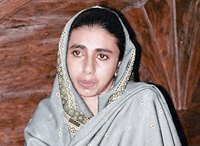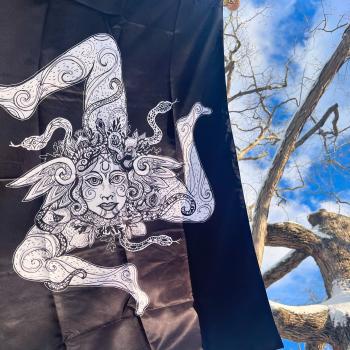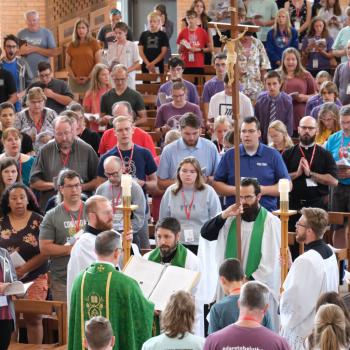By Uzma Mariam Ahmed
 Sex trafficking and prostitution are not unique to Muslim people or to Muslim countries. They are, however, harder to identify when they take shelter within the confines of Islamic marriages. In religions that only recognize monogamous marriages, it is easier to take the first step of categorizing a relationship as deviating from a real marriage. In Islam, however, both monogamous and polygamous marriages are considered legitimate, and Muslims from different parts of the world and from varying schools of Islamic thought have created forms of purported marriages that, in some instances, seem difficult to distinguish from prostitution. Furthermore, because some Muslims find room for debate about the rules governing marriage, as well as divorce, alimony, custody, and child support issues, there is a potential for the creation of suspect relationships labeled as marriages.
Sex trafficking and prostitution are not unique to Muslim people or to Muslim countries. They are, however, harder to identify when they take shelter within the confines of Islamic marriages. In religions that only recognize monogamous marriages, it is easier to take the first step of categorizing a relationship as deviating from a real marriage. In Islam, however, both monogamous and polygamous marriages are considered legitimate, and Muslims from different parts of the world and from varying schools of Islamic thought have created forms of purported marriages that, in some instances, seem difficult to distinguish from prostitution. Furthermore, because some Muslims find room for debate about the rules governing marriage, as well as divorce, alimony, custody, and child support issues, there is a potential for the creation of suspect relationships labeled as marriages.
Even a cursory survey of practices existing within the guise of Islamic marriages reveals that the boundaries of legitimate marital unions have been expanded to hide within their folds all manner of exploitative relationships. These include associations which are, in fact, sex trafficking and prostitution; one partner is either forcibly used for sex or is compensated through some monetary benefit.
These relationships range from those that are relatively easy to categorize as truly exploitative to those that appear to be legitimate polygamous unions, but do not conform to the Islamic requirements of a polygamous marriage. Though they exist on a wide spectrum, these relationships share commonalities. The most fundamental is that these unions deviate from the Qur'anic rules for both monogamous and polygamous marriages. They are also generally solemnized and consummated privately, their existence hidden from public view. The Prophet was known to have said, "What distinguishes the lawful from the unlawful was the drum and shouts of the nikah [marriage day]." Because these relationships are hidden from society, they also all involve situations where the Islamic rights of monetary support for spouses and children are denied.
The relationships easiest to recognize as pure sexual exploitation are those that involve sex trafficking, a form of sexual slavery. One famous instance was brought to light by Nicholas Kristoff of The New York Times, who in 2006 covered the story of Aisha Parveen, a 20 year old Pakistani woman who was kidnapped and forced into prostitution as a 14 year old. Mian Sher, the man who kidnapped her and acted as her pimp, kept her as his youngest wife. During her six years as his slave, he beat her daily and sexually tortured her. Parveen finally managed to escape with the help of a man who was in the house doing repairs, and the two fell in love and married after their escape. Mian Sher was enraged, and he brought a case against Parveen for adultery, based on the legal argument that Parveen was his wife and had unlawfully fled with a lover. His plan was to then bail her out and take her back to the brothel.
Nicholas Kristoff began covering Parveen's story while she was waiting for a verdict from the court, and the Pakistani and international press picked up on Parveen's story. The publicity led to the court dismissing the case, allowing Parveen to permanently escape from Mian Sher. The fact that Mian Sher felt emboldened enough to pursue legal avenues to recover his sexual slave, based on this fictionalized marriage, indicates the grievous state of the law with regards to women's rights in Pakistan. It also indicates that corruption and relaxed standards allow men to practice putative polygamous marriages and engage in terrible crimes, such as trafficking, under their guise. When Kristoff asked renowned Pakistani human rights attorney Asma Jahangir about Parveen's case, Jahangir explained that she was completely unsurprised about Parveen's situation, because it happens all the time in Pakistan.
While this instance is clearly sex trafficking hiding within the pretext of a marriage, there are other relationships which are harder to qualify as such, but still appear closer to prostitution than legitimate marital unions. For instance, mut'aa marriages are temporary marriages which are practiced by Shia Muslims. In a mut'aa marriage, men (and sometimes women) agree to pay their partners a certain sum of money for a marriage lasting a set period of time. The putative husband can end the contract before the expiration of the agreed upon period, but a wife must compensate the husband if she wants to end the union more quickly. Though Shia law recognizes the children of such marriages as legitimate, in practical terms it is difficult for women to prove the paternity of these children, because there are no witnesses to the creation of a mut'a relationship and no registration requirements. It is entirely a private transaction.




